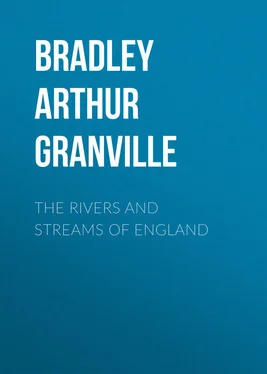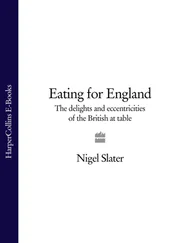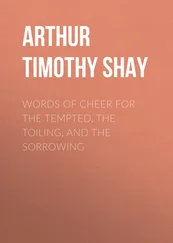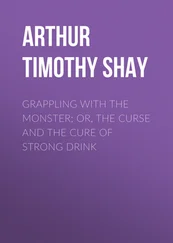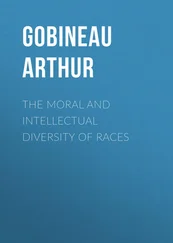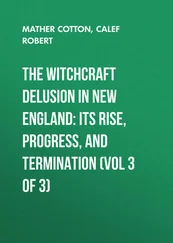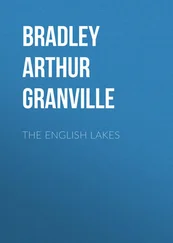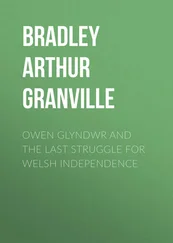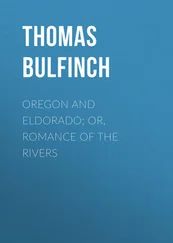Arthur Bradley - The Rivers and Streams of England
Здесь есть возможность читать онлайн «Arthur Bradley - The Rivers and Streams of England» — ознакомительный отрывок электронной книги совершенно бесплатно, а после прочтения отрывка купить полную версию. В некоторых случаях можно слушать аудио, скачать через торрент в формате fb2 и присутствует краткое содержание. Жанр: foreign_language, foreign_antique, foreign_prose, Путешествия и география, на английском языке. Описание произведения, (предисловие) а так же отзывы посетителей доступны на портале библиотеки ЛибКат.
- Название:The Rivers and Streams of England
- Автор:
- Жанр:
- Год:неизвестен
- ISBN:нет данных
- Рейтинг книги:3 / 5. Голосов: 1
-
Избранное:Добавить в избранное
- Отзывы:
-
Ваша оценка:
- 60
- 1
- 2
- 3
- 4
- 5
The Rivers and Streams of England: краткое содержание, описание и аннотация
Предлагаем к чтению аннотацию, описание, краткое содержание или предисловие (зависит от того, что написал сам автор книги «The Rivers and Streams of England»). Если вы не нашли необходимую информацию о книге — напишите в комментариях, мы постараемся отыскать её.
The Rivers and Streams of England — читать онлайн ознакомительный отрывок
Ниже представлен текст книги, разбитый по страницам. Система сохранения места последней прочитанной страницы, позволяет с удобством читать онлайн бесплатно книгу «The Rivers and Streams of England», без необходимости каждый раз заново искать на чём Вы остановились. Поставьте закладку, и сможете в любой момент перейти на страницу, на которой закончили чтение.
Интервал:
Закладка:
Hay (Le Haie, as the Normans called it) marks the boundary on one bank between England and Wales. It was of old a sort of small Berwick-on-Tweed, and many a fight has taken place in its neighbourhood. As at Welshpool the English, mainly the dependants of the Norman castle, now a residence, lived in the east, the native Welsh in the west part of the town, and the memory of such divisions survives even to this day in the respective districts of English and Welsh Hay. Just below Hay the ruined towers of Clifford Castle, whence came fair Rosamond, cast their shadows on the stream. It is sixteen miles from here to Hereford. The Black Mountains recede from the river’s southern shore and droop to the lower ridges, in whose parallel troughs the Monnow, the Honddu, and the Dore, their backs here turned upon the Wye, hurry southward to meet it at Monmouth, 40 miles below. The Radnor moors on the north bank, too, have already fallen back, and the river has broken out into England and the plains of Herefordshire – if so diversified a country may be called by comparison a plain – and to a quiet life, unvexed by mountain spurs and unchafed by resisting rocks. The Wye, however, keeps plenty of life within it, tumbling oftener over gravelly shallows than the Severn, loitering less sullenly in long reaches, and lurking less frequently between high grassy banks – a brighter and more joyous river altogether to be with, and clearer too, for there is practically nothing to defile its waters. Shooting swiftly under the old bridge of Bredwardine, or stealing quietly through the park lands of Moccas, or winding among the pastures of Monington, where Owen Glyndwr is thought to have spent his closing years at his daughter’s home, the Wye is always the best of company. Sleek Hereford cattle, the most decorative of all breeds to English landscape, are everywhere. The high wooded ridges, so characteristic of Herefordshire, rise now on one bank and now on the other, while always the long line of the Black Mountains fills the western sky. Fish of every kind worth having are in the river that offers such variety of lodging – the salmon in his season, the trout, the grayling, the pike and chub and perch, and all the lesser fry. And thus to Byford and Bridge Sollars where Offa’s Dyke, having run from North Wales, ends its course, and leaves the Wye for the rest of its journey to form the eighth-century line of demarcation between Welsh and Saxon, or, more literally perhaps, between those who knocked under to the Mercian Kings and those who would not.
Not much of a boating river as will have been gathered is the Wye, but as it draws near Hereford there is a mile or two of deep water and a good deal more that is available to the energetic oarsman: sufficiently so, at any rate, to make the little cathedral city a boating centre in a modest way. Below the ancient bridge, over which so many armed hosts have marched to fight the Welsh, the Wye spreads into rapid shallows and thus skirts the city; fair meadows upon one side, upon the other the Bishop’s Palace and the Cathedral, and the broad Castle green, where that vanished fortress once stood. And now upon high terraces the citizens of Hereford muster in strength when the sun shines, with a fine prospect over the broad rippling river and over the most wooded of landscapes, to the dark masses of the Black Mountains, behind which the sun sets. Hereford is a clean and pleasant old town, quite unsmirched by any factory chimneys, and largely concerned in cider-making, county business, and matters educational and ecclesiastical: a typical cathedral town, with the virtues and failings of its type in great perfection. It is not so rich in Tudor architecture as Shrewsbury, Ludlow, or Tewkesbury, but has a fair sprinkling of seventeenth-century houses, and many restful byways of Queen Anne or Early Georgian type. The Cathedral is of course one of the lesser ones in size, but is of great interest. Built at the end of the eleventh century to replace a humbler predecessor burnt by the Welsh, it has a great deal of the original Norman work, as, for instance, the piers of the nave, with much of the choir and south transept. As for the rest, there is much fine work, Early English, Decorated and Perpendicular.
The building is double cruciform in shape, with a massive central tower. It has several rich chantries of Perpendicular date and some fine cloisters. It was much injured by the fall of a west tower in the eighteenth century, and still more by the inept reparation of the damage by Wyatt, that misguided architect who gained the favour of an uncritical generation and ran amuck among such English cathedrals as were unfortunate enough to demand attention during his lifetime. Hereford may be dismissed with the perhaps serviceable remark that it is the best centre for seeing the Wye valley – using the latter term in the proper sense, not merely as applicable to the reaches between Ross and Monmouth, the conventional limitations of tourist literature.
The second stage of the river’s third or lowland section, if so geometrical a term is in order, that, namely, from Hereford to Ross, must merely be indicated as of the same quality, though in detail perhaps more emphatically picturesque, as the stage from Hay to Hereford. The delightfully inconsequent outcropping wooded heights and ranges of Herefordshire press more closely on the river, particularly on its eastern banks, and amid the stately purlieus of Holm Lacy. From the gate of Wales to Hereford, ever charming though the river itself be, one looks always westward and up stream to the dominant Welsh hills and mountains as the outstanding feature and background of the canvas. Below Hereford, as Wales grows dim, the valley begins to supply more prominent characteristics of its own – not such as it achieves later, but quite sufficiently distinguished in height and opulence of colouring to save its reputation from the reproach of a single commonplace interlude. Just below Hereford, too, the Lugg, bringing with it the waters of the Arrow, joins the Wye. Both these rivers rise in the Radnor hills, and have been always noted for their trout and grayling, particularly the latter, a fish now fairly distributed, but a generation ago only found in the comparatively few rivers where it was indigenous. Among these the Lugg, like the Teme, held high rank. After running out of Wales through the deep woody glens about Presteign and Aymestry, and then traversing the battlefield of Mortimers Cross, it turns due south at Leominster, and ripples brightly over a stony bed, amid lush meadows and ruddy banks, down the heart of Herefordshire towards the Wye.
Ross is, of course, quite a noted little place, and has associated itself with the glories of the Wye with a particularity that is, I think, just a trifle unfair to Hereford, which as a town is of course incomparably more interesting, and even as a vantage point on the Wye has some advantages. But Ross is the place where oarsmen, with a trip to Chepstow in view, usually hire their boats, and if not archæologically inspiring, it is picturesquely seated on a ridge above the river, with a fine church crowning it, and a good Jacobean town hall. Also a “man of Ross,” an estimable and philanthropic eighteenth-century country gentleman no doubt, whom Pope made fortuitously famous by a line or two, but as a claimant on the interest of the outsider is now made something of a bore by Ross literature.
It is at Goodrich Castle, where Sir Thomas Meyrick once kept his celebrated collection of armour, with its Norman keep and imposing modern substitute half a mile away crowning the steeps, that the first premonitions of the transcendent beauties of the Lower Wye show themselves, and lofty hills begin to trench upon the river-banks. At Symond’s Yat begin those remarkable lower reaches of the Wye, which in a sense challenge comparison with the Welsh section, and are far better known. But this should not be, for they are quite different. The latter lie among the moors and mountains. The Wye is there what you expect to find it – a characteristic mountain river. Down here, however, its suddenly uplifting qualities and transcendent beauty burst upon you in the nature of the unexpected. In a series of quite extraordinary loops it burrows in deep troughs for many tortuous miles, overhung on both sides by masses of woodland. These almost perpendicular walls of foliage, 600 to 800 feet in height, are buttressed, as it were, by grey bastions and pillars of rock that project in bold and fine contrast to the soft curtain of leaves that hang in folds round them. The noted view from the summit of Symond’s Yat is as bewildering as it is beautiful; for the river here makes a loop of 4 miles, the neck of which is but a few hundred yards wide. For over 10 miles, in alternate moods of shallow rapids and quiet deeps, the Wye is forcing itself in violent curves through this strange group of lofty sandstone hills. Roads scarcely penetrate them, but the railway from Ross to Monmouth, with the help of tunnelling, gets through with stations at Lydbrooke Junction and Symond’s Yat. At the latter place is a good hotel attractively situated, besides accommodation of other kinds. All this district is now Crown property, which greatly simplifies the question of exploring it. Escaping from this delightful and stupendous entanglement of cliff and wood, the Wye runs down to Monmouth through a most exquisite valley, and between hills of goodly stature verdant to their summits with green pastures, criss-crossed by straggling hedges or belts of woodland. Small farms and cottages, with brightly-tinted walls, perched here and there upon a ledge on the steep face of the hills, are a characteristic feature too of all this lower Wye. Away to the south-east, stretching almost to the river, spreads the Forest of Dean. To the west the rolling surface of Monmouthshire, luxuriant in verdure and opulent in colouring, is cloven by the valley of the Monnow, which well-nourished and rapid stream meets the Wye at Monmouth.
Читать дальшеИнтервал:
Закладка:
Похожие книги на «The Rivers and Streams of England»
Представляем Вашему вниманию похожие книги на «The Rivers and Streams of England» списком для выбора. Мы отобрали схожую по названию и смыслу литературу в надежде предоставить читателям больше вариантов отыскать новые, интересные, ещё непрочитанные произведения.
Обсуждение, отзывы о книге «The Rivers and Streams of England» и просто собственные мнения читателей. Оставьте ваши комментарии, напишите, что Вы думаете о произведении, его смысле или главных героях. Укажите что конкретно понравилось, а что нет, и почему Вы так считаете.
